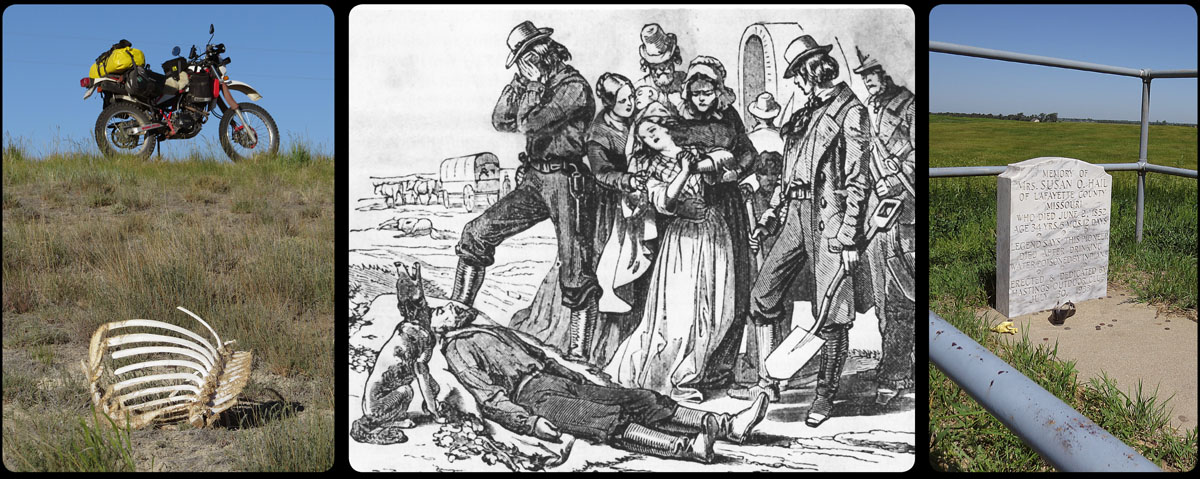To see the American wildlife, you really don’t need to leave the highway. Many victims of traffic are lying next to the road; skunks, raccoons, deer, antelope, rabbits, prairie dogs, squirrels, swallows. This morning I even saw a small lynx on the tarmac. Sometimes bones are all that remains of the victim.
In the five months on the road, there would be many deadly victims among the emigrants too. And contrary to popular belief, it weren’t the Indians that caused the most deaths. This dubious honor fell to cholera, or Asiatic Cholera, to be precise. The symptoms of this disease were diarrhoea and vomiting, and those who were infected were usually dead not long after they began to feel ill. It was possible for someone to be perfectly healthy in de morning, and buried at the end of the very same day. Bad hygiene in the popular and crowded camping spots were the causes of the rapid spread of the disease, especially in the infamous years 1849, 1850 and 1851, along the Platte River route. Here the disease made thousands of victims.
Everybody was afraid of the ‘invisible death’. Some of the sick were left behind, a note attached to their clothes, asking other travelers to give them some food and water. There are even stories of people that were buried before they were actually dead.
Not everybody was that harsh; there was al lot of compassion on the trail too. Plenty of stories exist of people that took care of or buried strangers, of the sick that were hoisted in a wagon passing by, or of orphans that were taken in by other families, supported from a ration that wasn’t all that much to start with.
Coffins weren’t available, of course. Sometimes boards of the wagon were used, in other cases the dead were just wrapped in a blanket or buffalo hide.
The deceased were usually buried right on the trail. That way, the graves were soon trampled by oxen and wagons, which reduced the chance of graves being looted by wolves or Indians. Every mile of the trail is said to contain as much as fifteen graves. The world’s longest burial ground, it is often called.
Whether it was death by cholera, or by an accident, by stampeded cattle, by drowning, or an attack from Indians, people never really got the time to process the loss of their beloved ones. They had to move on, making enough miles, making sure they had enough food every day. That was what mattered, if they wanted to arrive safely in Oregon eventually.

